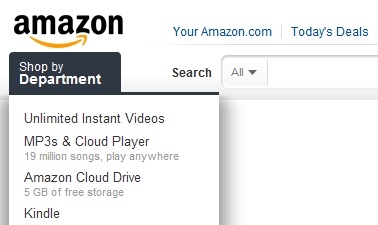How to Convert Amazon Shoppers into Repeat Customers
Every retailer understands how valuable marketplaces such as Amazon and eBay are to their success. Ecommerce giants such as Amazon serve hundreds of millions of customers per month, according to comScore, and allow retailers to reach a bigger and broader audience than what they may normally have access to. These marketplaces just keep getting bigger as well, with Amazon reporting in 2014 that sellers moved more than 1 billion items annually, according to the International Business Times.
But while these third-party marketplaces may sound like godsends on paper, particularly for new and upcoming sellers that may not have much brand pull on their own, it is crucial that retailers avoid relying on them too heavily. At the end of the day, Amazon and other marketplaces exist to make money for the parent company, which means these eCommerce giants care first and foremost for themselves. This can be observed in new policies that are enacted by these marketplace that may hinder retailers ability to sell products and services effectively to repeat customers.
Marketplace sales are not reliable
But moreover, marketplace sales are often fleeting. Anyone who has purchased goods on Amazon in the past knows that many people are looking for specific products, not at the brand selling it. This can create issues for merchants relying on marketplaces as a significant part of their income. Simple shifts can result in radically different sales results – maybe a merchant with a higher seller rating starts offering the same product or a seller offering the item lowers the price. Maybe the marketplace owner decides to no longer sell a category of items. These changes can create a massive drop off in sales and leave retailers that are over reliant on these marketplaces scrambling to make ends meet.
Moreover, because marketplace customers are looking at products instead of brands, it is quite likely they will not become repeat customers without some additional effort on the behalf of the seller. As anyone in the retail business can attest to, half the battle is winning over new customers in the first place, and many merchants rely heavily on repeat sales to drive their profit margins. This can create even more issues for brands in the long run.
At the end of the day, merchants need to realize that when they make these third-party marketplaces the center of their sales initiatives, they are ultimately at the whim of the marketplace owner. This is why retailers should utilize these marketplaces, but they should also be focusing on developing their own brand while they make use of these channels.
Building a brand while utilizing marketplaces
While most retailers understand the importance of branding, it is critical to note that it can actually be somewhat difficult to garner brand exposure while selling through marketplaces. There are only so many ways retailers can modify their eBay and Amazon stores to really stand out in the crowd, and for good reason – these marketplaces want to deliver a consistent customer experience across all channels.
Additionally, the marketplace owners often retain a lot of customer information for themselves outside of the necessities, such as name and address. This makes it difficult for retailers to discover what type of audience they are hitting on sites such as Amazon and eBay, and also complicates loyalty efforts and upselling initiatives. Some marketplaces will sell this valuable customer information to merchants, but that is an expense many sellers cannot afford.
So, what can retailers do to build their brand and engage marketplace customers? The key is driving shoppers to a location where the merchant has control of the experience – their own website. One of the easiest ways to do this is by including promotional materials and even coupons in packaging for marketplace purchases. A link to a website and pertinent discount or coupon can go a long way in getting customers not only to make an additional purchase from retailers, but to do it through the seller’s website instead of the marketplace store.
Once retailers have bridged this gap and driven customers to their websites, they can engage them and begin catering the shopping experience around them as they normally would. Retailers gain that information they didn’t have before – they know which items customers are looking at and they know more information about them, such as demographic information.
At the end of the day, marketplaces such as Amazon and eBay can be a significant boon. However, retailers cannot rely on them as their central business platform – it is critical they use these channels as brand development tools to create a loyal base of customers.

